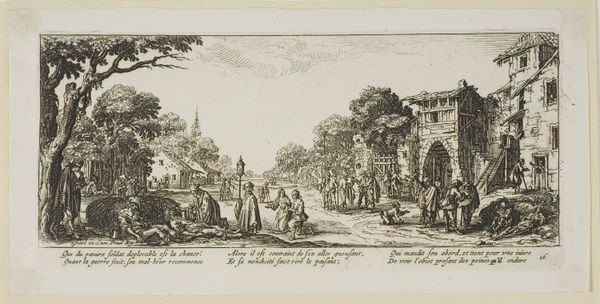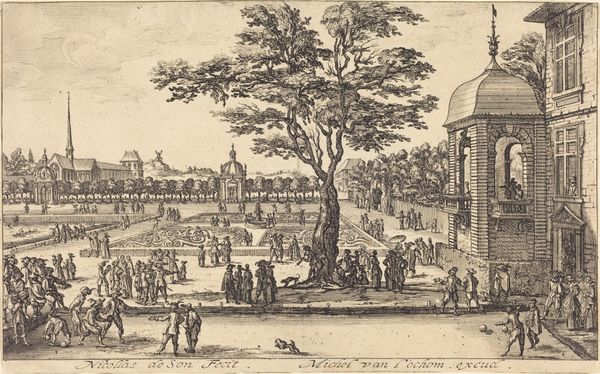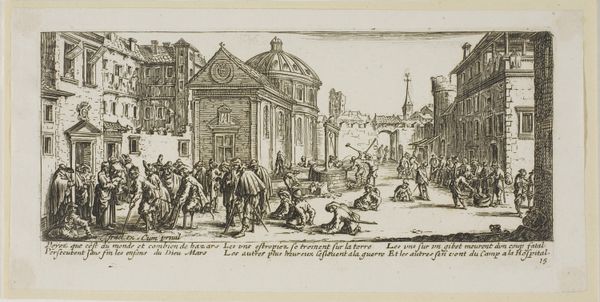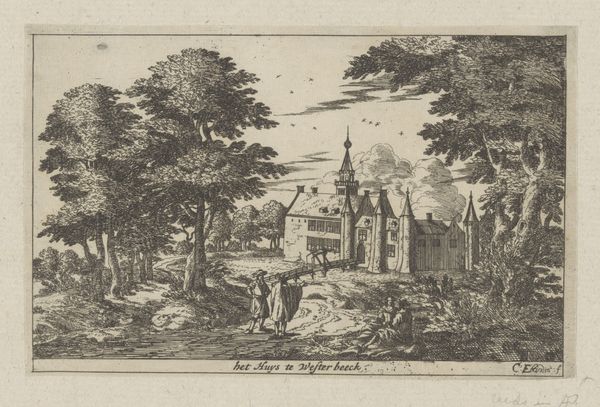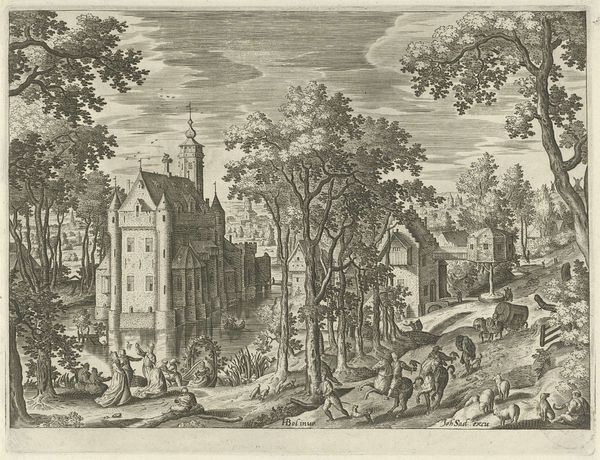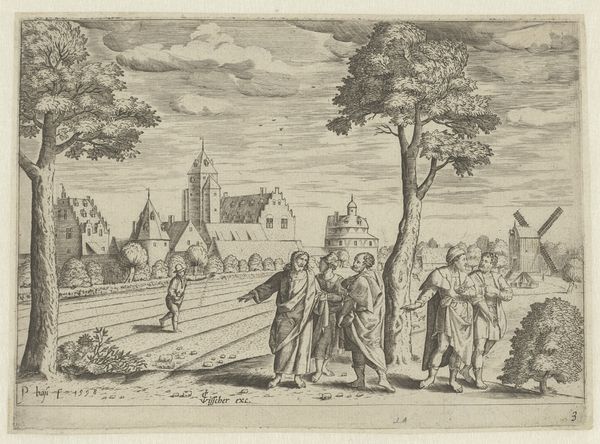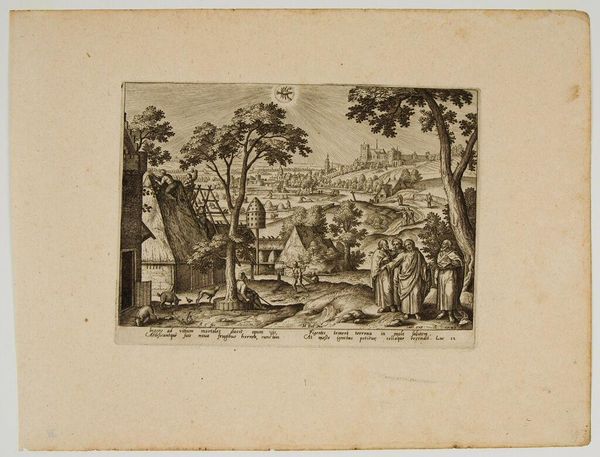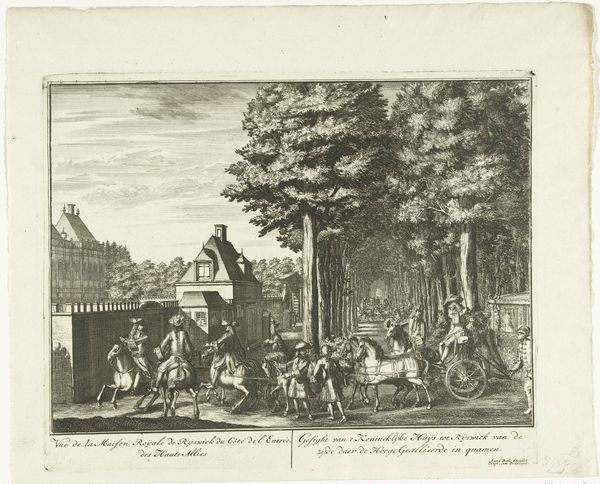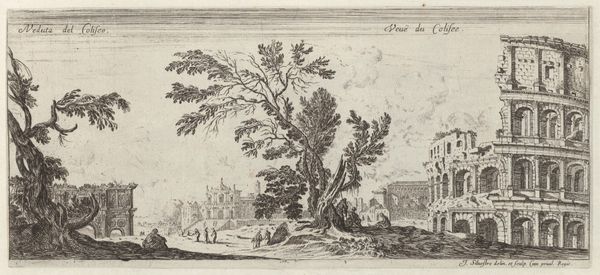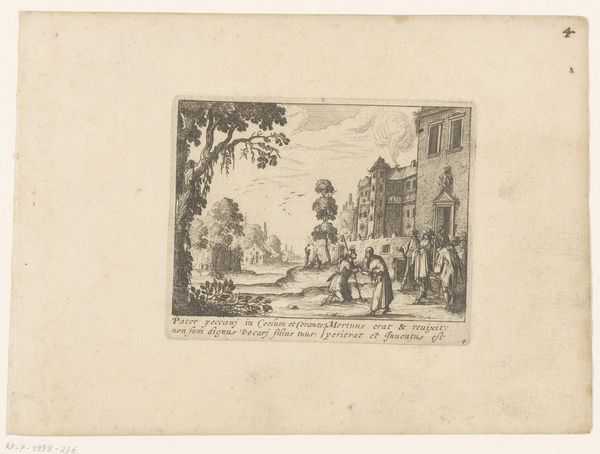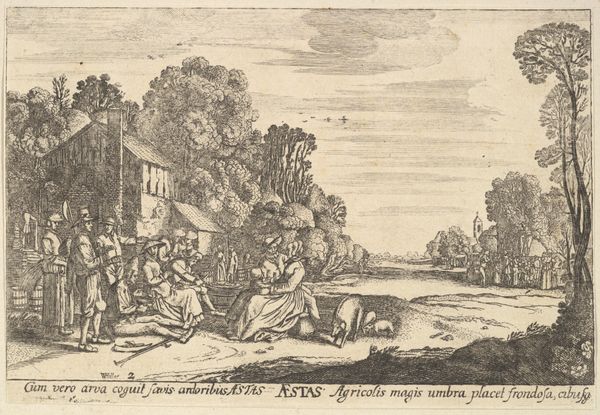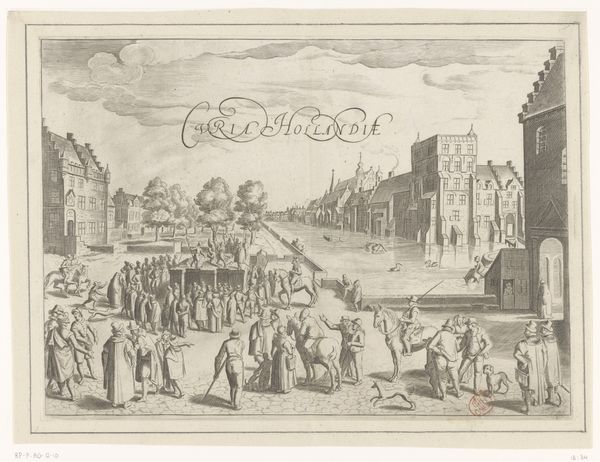
print, engraving
#
narrative-art
#
baroque
# print
#
landscape
#
figuration
#
line
#
genre-painting
#
engraving
#
realism
Dimensions: 83 mm (height) x 188 mm (width) (plademaal)
Editor: We're looking at "Beggars and Starving People on a Road" by Jacques Callot, from 1633. It's an engraving. There's such a sense of destitution conveyed through the crowded composition and stark lines. How do you interpret this work? Curator: Well, let’s consider the socio-political context. Callot made this print during the Thirty Years' War, a period of immense upheaval in Europe. The print, therefore, functions as a powerful commentary on the human cost of conflict. What do you notice about the figures themselves? Editor: They seem completely dispossessed – begging, injured, with threadbare clothing. Their bodies almost blend into the landscape. Curator: Exactly. This blending is significant. Callot isn’t just showing individual suffering, but also the systemic effects of war that integrate themselves into society. It became normalized, influencing governance and resources and shaping institutional responses to poverty. It served a purpose. Does the realism seem straightforward to you, or does it have a particular charge? Editor: It feels charged. It is hard to dismiss because it doesn’t shy away from portraying suffering. It’s not romanticized at all. Curator: Right. It makes us question who benefits from war and who is left to pick up the pieces. I agree it is unsentimental because Callot focuses on its devastating social repercussions, challenging the dominant narratives around military victory and national glory promoted by institutions at the time. Editor: This really sheds light on how art can engage with historical events and critique prevailing social norms. It makes me think about how images can shape perceptions of conflicts, even today. Curator: Absolutely. It illustrates the continuing importance of questioning dominant narratives and recognizing the long-lasting societal wounds left by warfare.
Comments
No comments
Be the first to comment and join the conversation on the ultimate creative platform.

